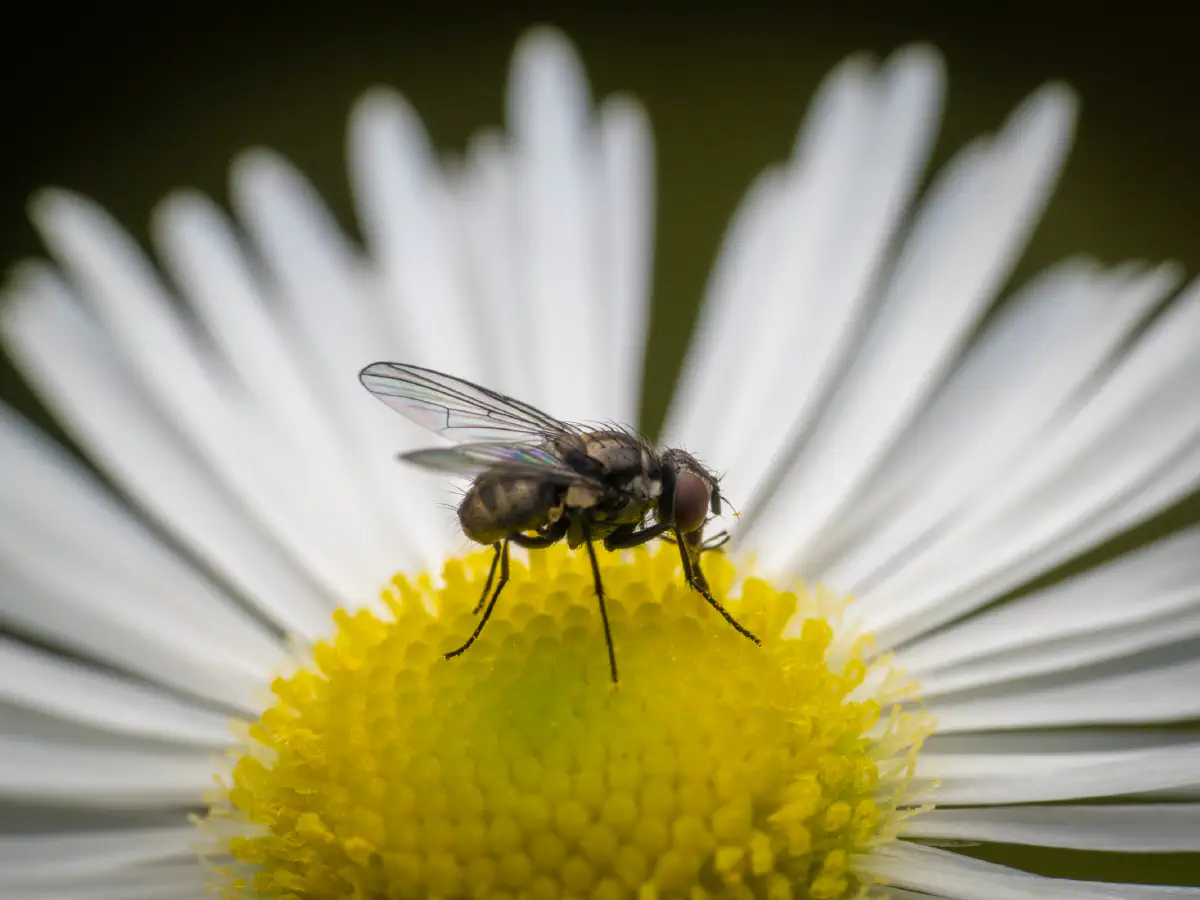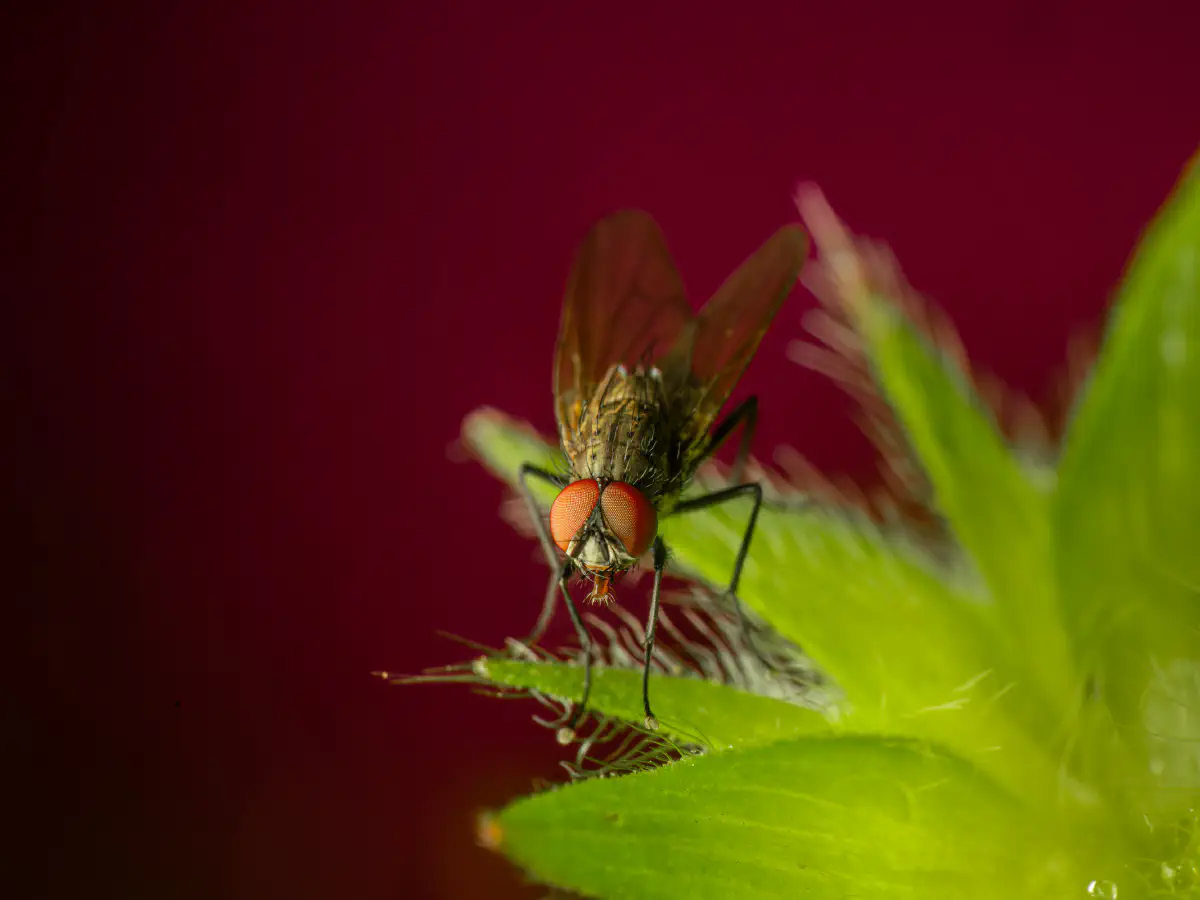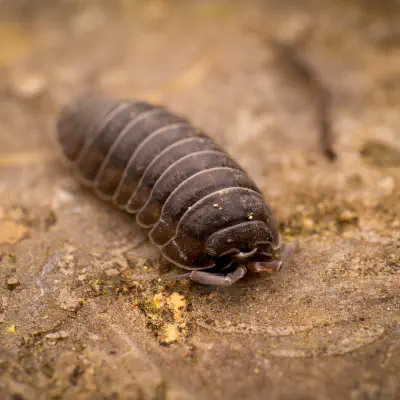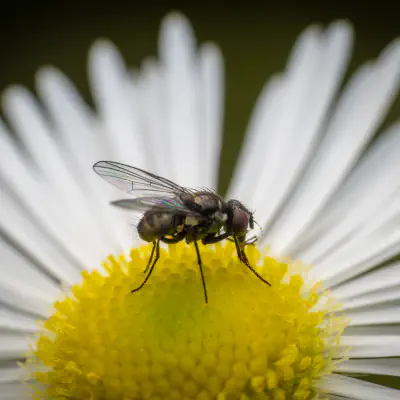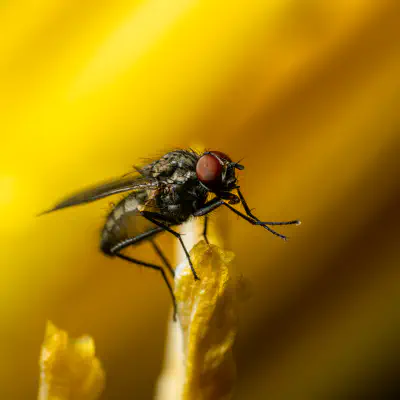Adult houseflies are usually 6 to 7 mm (1⁄4 to 9⁄32 in) long with a wingspan of 13 to 15 mm (1⁄2 to 19⁄32 in). The females tend to be larger winged than males, while males have relatively longer legs. Females tend to vary more in size and there is geographic variation with larger individuals in higher latitudes. The head is strongly convex in front and flat and slightly conical behind. The pair of large
compound eyes almost touch in the male, but are more widely separated in the female. They have three simple eyes (ocelli) and a pair of short antennae. Houseflies process visual information around seven times more quickly than humans, enabling them to identify and avoid attempts to catch or swat them, since they effectively see the human's movements in slow motion with their higher flicker fusion rate. The mouthparts are specially adapted for a liquid diet; the
mandibles and maxillae are reduced and not functional, and the other mouthparts form a retractable, flexible proboscis with an enlarged, fleshy tip, the labellum. This is a sponge-like structure that is characterized by many grooves, called pseudotracheae, which suck up fluids by capillary action. It is also used to distribute saliva to soften solid foods or collect loose particles. Houseflies have chemoreceptors, organs of taste, on the tarsi of their legs, so they can identify
foods such as sugars by walking over them. Houseflies are often seen cleaning their legs by rubbing them together, enabling the chemoreceptors to taste afresh whatever they walk on next. At the end of each leg is a pair of claws, and below them are two adhesive pads, pulvilli, enabling the housefly to walk up smooth walls and ceilings using Van der Waals forces. The claws help the housefly to unstick the foot for the
next step. Houseflies walk with a common gait on horizontal and vertical surfaces with three legs in contact with the surface and three in movement. On inverted surfaces, they alter the gait to keep four feet stuck to the surface. Houseflies land on a ceiling by flying straight towards it; just before landing, they make a half roll and point all six legs at the surface, absorbing the shock with the front legs and sticking
a moment later with the other four. The thorax is a shade of gray, sometimes even black, with four dark, longitudinal bands of even width on the dorsal surface. The whole body is covered with short hairs. Like other Diptera, houseflies have only one pair of wings; what would be the hind pair is reduced to small halteres that aid in flight stability. The wings are translucent with a yellowish tinge at their base. Characteristically, the
medial vein (M1+2 or fourth long vein) shows a sharp upward bend. Each wing has a lobe at the back, the calypter, covering the haltere. The abdomen is gray or yellowish with a dark stripe and irregular dark markings at the side. It has 10 segments which bear spiracles for respiration. In males, the ninth segment bears a pair of claspers for copulation, and the 10th bears anal cerci in both sexes. A variety of
species around the world appear similar to the housefly, such as the lesser house fly, Fannia canicularis; the stable fly, Stomoxys calcitrans; and other members of the genus Musca such as M. vetustissima, the Australian bush fly and several closely related taxa that include M. primitiva, M. shanghaiensis, M. violacea, and M. varensis. The systematic identification of species may require the use of region-specific taxonomic keys and can require dissections of the male reproductive parts
for confirmation.
